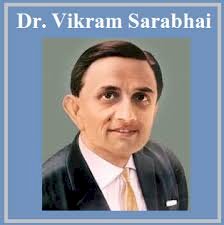Vikram Sarabhai | Discoveries, Biography & Facts
Dr. Vikram Sarabhai, often referred to as the Father of the Indian Space Program, was a pioneering scientist whose vision and efforts laid the foundation for India’s remarkable advancements in space technology.

Vikram Sarabhai – The Visionary Who Propelled India into Space
Dr. Vikram Sarabhai, often referred to as the Father of the Indian Space Program, was a pioneering scientist whose vision and efforts laid the foundation for India’s remarkable advancements in space technology. With unwavering determination, he transformed a fledgling nation into a player in the global space exploration arena. This blog delves into the life, achievements, and legacy of this extraordinary individual who continues to inspire generations of scientists and innovators.
Quick Facts about Vikram Sarabhai:
| Attribute | Details |
|---|---|
| Full Name | Vikram Ambalal Sarabhai |
| Date of Birth | August 12, 1919 |
| Place of Birth | Ahmedabad, Gujarat, India |
| Date of Death | December 30, 1971 |
| Age at Death | 52 years |
| Profession | Scientist, Visionary, Innovator |
| Known For | Founding Indian Space Research Organisation (ISRO), Contributions to India’s space program |
| Education | University of Cambridge (Tripos in Natural Sciences, PhD in Cosmic Rays) |
| Spouse | Mrinalini Sarabhai (Classical dancer and choreographer) |
| Children | Mallika Sarabhai (Dancer, Activist), Kartikeya Sarabhai (Environmentalist) |
| Major Awards | Padma Bhushan (1966), Padma Vibhushan (Posthumous, 1972) |
| Net Worth (Historical) | Not applicable; worked primarily as a scientist and public servant |
Early Life and Education
Born on August 12, 1919, in Ahmedabad, Gujarat, Vikram Sarabhai grew up in a privileged family known for its commitment to philanthropy and education. His father, Ambalal Sarabhai, was a successful industrialist, and his mother, Sarla Devi, was a social activist. The Sarabhai household was a hub for intellectual and cultural discussions, hosting luminaries like Rabindranath Tagore and Mahatma Gandhi.
Vikram’s interest in science blossomed early, and he pursued his higher education at the prestigious University of Cambridge in England, earning a Tripos in Natural Sciences. The outbreak of World War II temporarily brought him back to India, where he conducted research on cosmic rays under Sir C.V. Raman. Post-war, he returned to Cambridge to complete his PhD in Cosmic Ray Physics in 1947.
Career and Contributions
Dr. Vikram Sarabhai’s contributions to science and technology were monumental, particularly in space research. Recognizing the potential of space technology for national development, he founded ISRO (Indian Space Research Organisation) in 1969. His efforts were instrumental in launching India's first satellite, Aryabhata, in 1975, albeit posthumously.
Major Contributions:
- Establishing ISRO: Under Sarabhai’s leadership, ISRO was set up with the mission of harnessing space technology for India's development.
- Initiating Space Programs: He envisioned satellite programs for communication, weather forecasting, and resource mapping.
- Setting Up Institutions: Sarabhai established key institutions like the Physical Research Laboratory (PRL) in Ahmedabad in 1947, which became a hub for space and atmospheric sciences.
- Promoting Atomic Energy: As chairman of the Atomic Energy Commission of India, Sarabhai accelerated nuclear research in the country.
- Encouraging Education and Industry: He emphasized collaboration between scientific research and industries, fostering an ecosystem for innovation.
Awards and Recognition
Dr. Sarabhai’s pioneering work earned him widespread recognition. Notable among his awards are:
- Padma Bhushan (1966): For his contributions to science and engineering.
- Padma Vibhushan (Posthumous, 1972): For his exceptional service to the nation.
Personal Life
Vikram Sarabhai married Mrinalini Sarabhai, a renowned classical dancer, in 1942. The couple had two children: Mallika Sarabhai, a celebrated dancer and activist, and Kartikeya Sarabhai, an environmentalist and founder of the Centre for Environment Education (CEE).
Despite his demanding professional life, Sarabhai was known for his deep commitment to family and for encouraging creativity and discipline in his children.
Legacy and Impact
Dr. Vikram Sarabhai passed away on December 30, 1971, at the age of 52. However, his legacy continues to shape India's scientific and technological trajectory. His vision for using space technology to improve the quality of life for millions remains a cornerstone of ISRO's mission.
Institutions Founded by Sarabhai:
- ISRO: Driving India’s space exploration.
- PRL (Physical Research Laboratory): A leading center for space science research.
- Indian Institute of Management Ahmedabad (IIM-A): Established with his support to promote management education.
Sarabhai’s Vision:
- Space technology as a tool for national development.
- Encouraging youth to pursue science and research.
- Bridging the gap between scientific research and practical applications.
Dr. Vikram Sarabhai’s Impact on Modern India
Today, ISRO stands as a testament to Sarabhai’s vision. Under his guidance, the organization grew from modest beginnings to achieving milestones like the Chandrayaan and Mangalyaan missions. His leadership philosophy and innovative spirit have made him a role model for aspiring scientists and entrepreneurs.
Conclusion
Dr. Vikram Sarabhai’s life was a shining example of how visionary leadership can transform a nation. His contributions to science, education, and industry continue to resonate, influencing India’s journey as a technological powerhouse. As we celebrate his legacy, we are reminded of his belief:
"There are some who question the relevance of space activities in a developing nation. To us, there is no ambiguity of purpose... We do not have the fantasy of competing with the economically advanced nations in the exploration of the moon or the planets or manned space-flight. But we are convinced that if we are to play a meaningful role nationally, and in the community of nations, we must be second to none in the application of advanced technologies to the real problems of man and society."

 Deepak Maurya
Deepak Maurya 































